《COMPARATIVE LAW CASES-TEXT-MATERIALS FOURTH EDITION》
| 作者 | 编者 |
|---|---|
| 出版 | MINEOLA.NEW YORK |
| 参考页数 | 890 |
| 出版时间 | 1980(求助前请核对) 目录预览 |
| ISBN号 | 0882770071 — 求助条款 |
| PDF编号 | 812919998(仅供预览,未存储实际文件) |
| 求助格式 | 扫描PDF(若分多册发行,每次仅能受理1册) |
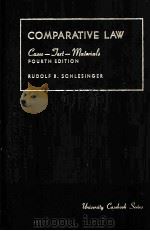
A. THE NATURE OF A FOREIGN LAW PROBLEM1
Ⅰ. INTRODUCTION: THE COMPARATIVE METHOD—ITS PURPOSE AND PROMISE1
1. The Comparative Method Applied to Domestic Problems2
a. The Foreign Solution as a Model—Foreign Elements in Domestic Law2
b. The Foreign Solution as a Contrast or a Means of Gaining Perspective18
2. The Comparative Method Applied to Transactions Across International Boundaries25
a. Problems Arising from Differences Among Legal Systems25
(aa) Comparative Law, Conflict of Laws and International Law25
(bb) Foreign Law Problems in Domestic Legal Practice29
(cc) Foreign Operations and Foreign Litigation32
b. Bridging the Differences Among Legal Systems32
(aa) Unification and Harmonization33
(bb) The Common Core of Legal Systems36
3. The Comparative Method as a Scientific Approach41
Ⅱ. FOREIGN LAW IN OUR COURTS: PLEADING AND PROOF OF FOREIGN LAW45
1. The Basic Doctrines45
a. The Common Law Doctrine: Foreign Law as a "Fact"45
b. Statutory Modifications and Innovations58
c. Ramifications of the "Fact" Doctrine82
2. The Over-All Tactics of Foreign Law Litigation: Consequences of Failure to Invoke or Prove the Applicable Foreign Law88
3. The Pre-Trial Phase: Pleading and Notice-Giving in Foreign Law Cases121
4. The Trial Phase: Techniques of Proving Foreign Law128
a. Documentary Evidence Including Official Certificates128
b. Proof by Experts137
(aa) Necessary Qualifications of a Foreign Law Expert137
(bb) Legal Education in Civil Law Countries and Its Bearing Upon the Qualifications of Civil Law Experts145
(cc) The Art of Examining and Cross-Examining Foreign Law Experts191
(dd) Court-Appointed Experts216
5. A Comparative Side-Glance: The Procedural Treatment of Foreign Law in Other Legal Systems218
B. COMMON LAW AND CIVIL LAW—COMPARISON OF METHODS AND SOURCES222
Ⅰ. COMMON LAW AND CIVIL LAW JURISDICTIONS DISTINGUISHED222
1. Nature and Significance of the Distinction222
2. The Distinguishing Features of the"Civil Law"—Their Historical Roots238
a. The Pre-Codification Period238
b. The National Codifications—Traditional and Modern Elements in the Civil Law269
3. Geographic Expansion of Common Law and Civil Law303
Ⅱ. PROCEDURE IN CIVIL LAW COUNTRIES329
1. The Course of a Civil Lawsuit—Essential Elements of Procedural Institutions in Modern Civil Law Countries331
a. Selection of Counsel—Organization of the Legal Profession333
b. Lawyers' Fees342
c. Organization of Courts352
d. "Jurisdiction"—Some Traditional (But Gradually Disappearing) Differences Between Civilian and Common Law Thinking361
e. Service of Process(And a Glimpse at International Judicial Cooperation)382
f. Pleadings and Formation of Issues390
g. Evidence396
h. The Court's Decision415
i. Appeals424
2. The Place of "Civil" Litigation in a Civilian System—Lines of Demarcation435
a. Commercial Courts435
b. Arbitration436
c. Criminal Procedure438
d. Procedural Treatment of Concurrent Criminal and Civil Liability457
e. Public-Law Disputes462
(aa) The Civilians' Dichotomy Between Private-Law and Public-Law Litigation462
(bb) The Dichotomy (Between Private-Law and Public-Law Litigation) in International Contexts483
3. Comparative Civil Procedure—Some Questions and Observations489
Ⅲ. SUBSTANTIVE LAW494
1. System and Organization of the Codes494
2. Judicial Interpretation of Codes—The Force of Precedents in a Code System550
3. Political, Social and Moral Elements in the Principal Codes608
a. The Codes and Economic Freedom609
(aa) The Parties' Freedom to Shape Their Contracts and Other Transactions609
(bb) Enforcement of Contracts613
b. The Codes and Security of Transactions634
(aa) The Principle of Publicity in the Transfer of Land634
(bb) The Principle of Publicity in Transactions Not Relating to Land646
c. The Codes and the Idea of Justice: Boni Mores, Bona Fides and Abus des Droits—No Separation of Law and Equity653
C. A TOPICAL APPROACH TO THE CIVIL LAW: SOME ILLUSTRATIVE SUBJECTS721
Ⅰ. AGENCY721
1. The "Abstract Nature" of the Agent's Power721
2. The Interaction of Civil Codes and Commercial Codes in the Law of Agency—Application of the Principle of Publicity728
3. Powers of Attorney—Form Requirements731
4. Powers of Attorney—Construction and Scope733
Ⅱ. CORPORATIONS748
1. Civil Law and Common Law Methods in the Law of Corporations750
2. Bearer Shares759
3. Limited Liability Companies781
4. Protection of Creditors and Minority Stockholders786
a. Preservation of the Registered Amount of Capital786
b. Minority Stockholders' "Equitable Remedies"787
Ⅲ. CONFLICT OF LAWS793
1. Conflicts Rules Built into a Code System: Their Form and Structure794
2. Illustrative Conflicts Rules Derived from Civilian Codes800
a. Nationality as a Basis of Judicial Jurisdiction800
b. The Impact of "Ordre Public" on Contingent Fee Agreements805
D. CAVEAT: THE SPECIAL HAZARDS OF COMPARATIVE LAW815
Ⅰ. LANGUAGE DIFFICULTIES815
Ⅱ. DIFFERENCES IN CLASSIFICATION819
Ⅲ. THE CONTRAST BETWEEN THE PRINTED WORD AND ACTUAL PRACTICE827
APPENDIXA BRIEF EXCURSUS ON COMPARATIVE AND FOREIGN LAW RESEARCH: HOW TO FIND THE RELEVANT MATERIALS837
Index845
1980《COMPARATIVE LAW CASES-TEXT-MATERIALS FOURTH EDITION》由于是年代较久的资料都绝版了,几乎不可能购买到实物。如果大家为了学习确实需要,可向博主求助其电子版PDF文件(由 1980 MINEOLA.NEW YORK 出版的版本) 。对合法合规的求助,我会当即受理并将下载地址发送给你。
高度相关资料
-
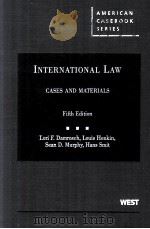
- INTERNATIONAL LAW CASES AND MATERIALS FIFTH EDITION
- 1993 AMERICAN CASEBOOK SERIES
-

- ADMINISTRATIVE LAW CASES AND MATERIALS SIXTH EDITION
- COLIN S.DIVER AND JACK M.BEERMANN"
-
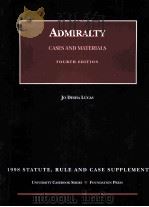
- ADMIRALTY CASES AND MATERIALS FOURTH EDITION
- 1998 FOUNDATION PRESS
-

- CRIMINAL LAW CASES AND MATERIALS SECOND EDITION
- 1979 WEST PUBLISHING CO.
-
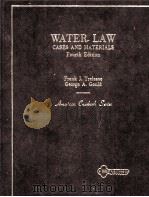
- CASES AND MATERIALS ON WATER LAW FOURTH EDITION
- 1986 WEST PUBLISHING CO.
-

- CRIMINAL LAW CASES AND MATERIALS THIRD EDITION
- 1986 ROUTLEDGE
-

- CASES IN COMPANY LAW FOURTH EDITION
- 1984 MACDONALD AND EVANS
-
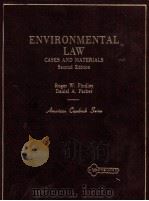
- ENVIRONMENTAL LAW CASES AND MATERIALS SECOND EDITION
- 1985 WEST PUBLISHING GO.
-
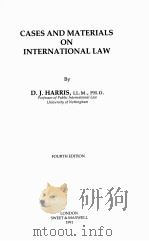
- CASES AND MATERIALS ON INTERNATIONAL LAW FOURTH EDITION
- 1991 LONDON SWEET & MAXWELL
-
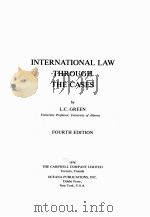
- INTERNATIONAL LAW THROUGH THE CASES FOURTH EDITION
- 1978 THE CARSWELL COMPANY LINMITED
-

- BUSINESS LAW TEXT & CASES FIFTH EDITION
- 1991 THE DRYDEN PRESS
-

- CASES AND MATERIALS ON REMEDIES FOURTH EDITION
- 1996 THE FOUNDATION PRESS
-
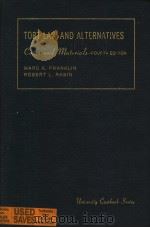
- CASES AND MATERIALS ON TORT LAW AND ALTERNATIVES FOURTH EDITION
- 1987 FOUNDATION PRESS
-

- AVIATION LAW CASES AND MATERIALS SECOND EDITION
- 1981 MATTHEW BENDER
提示:百度云已更名为百度网盘(百度盘),天翼云盘、微盘下载地址……暂未提供。➥ PDF文字可复制化或转WORD
